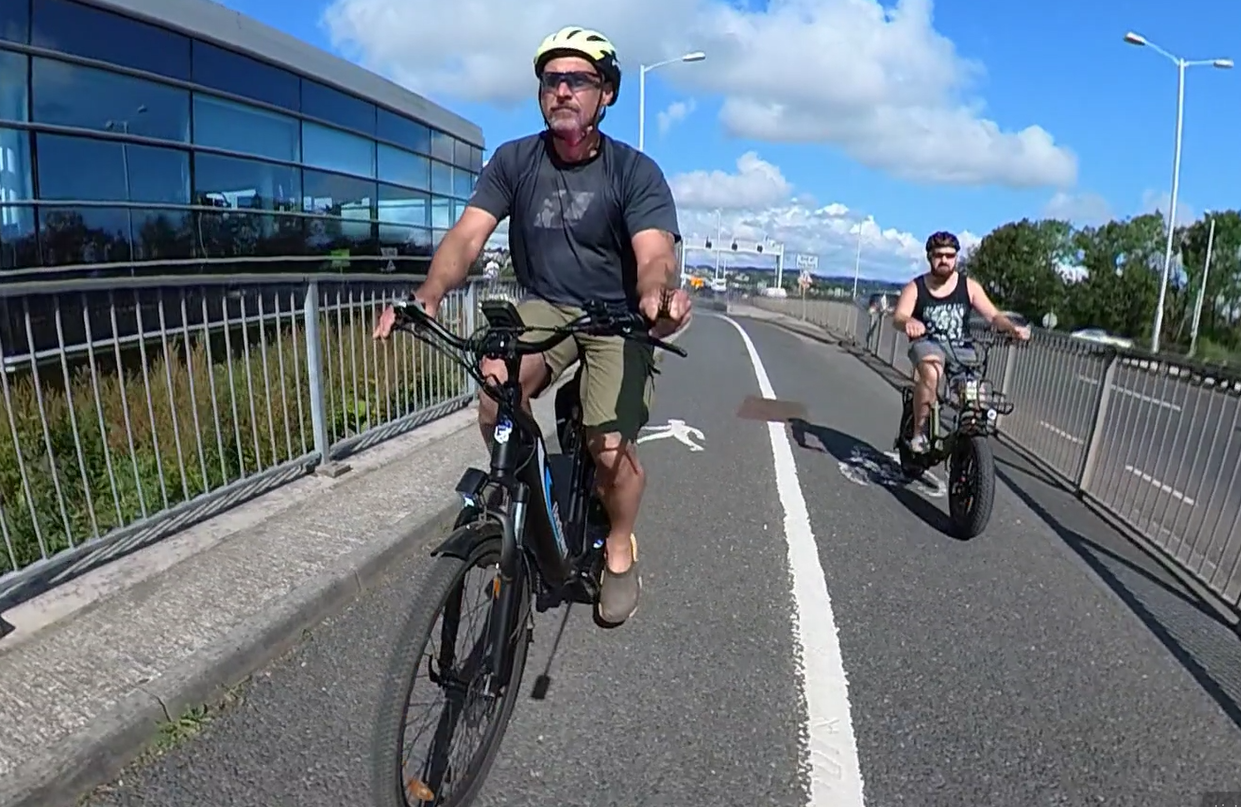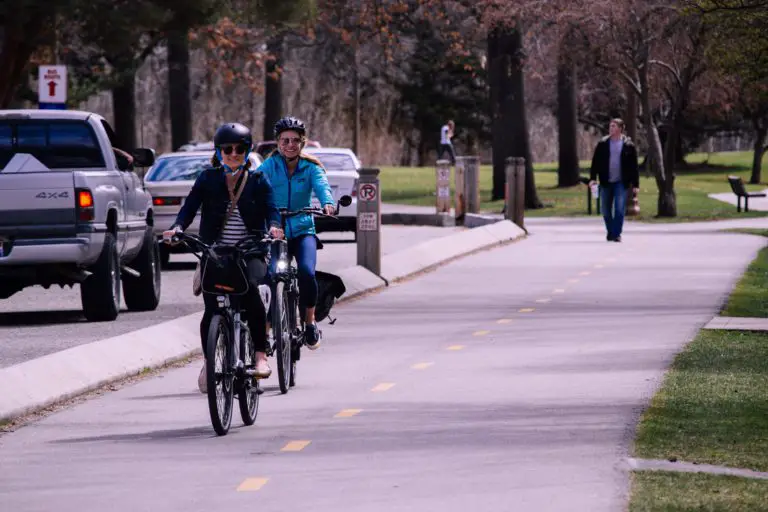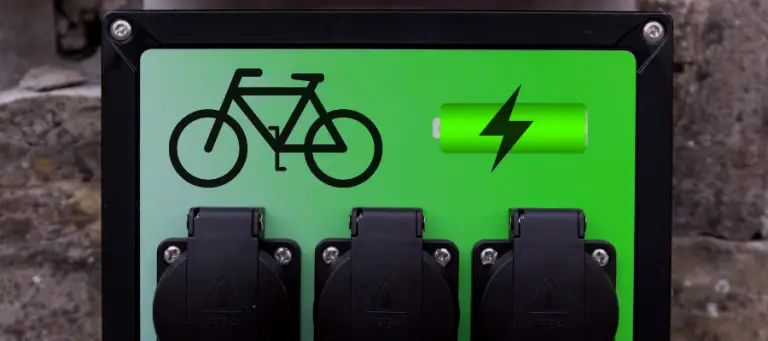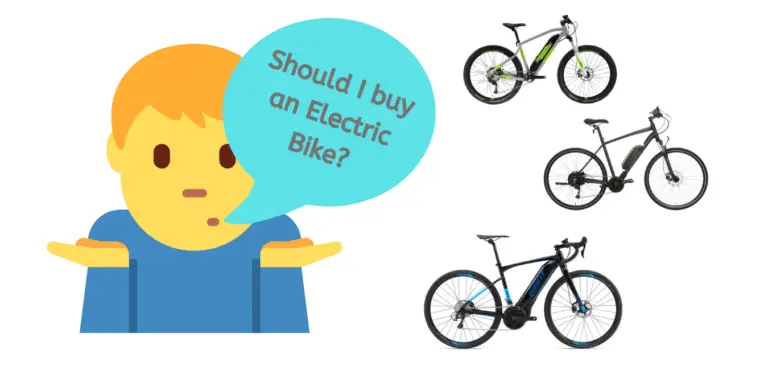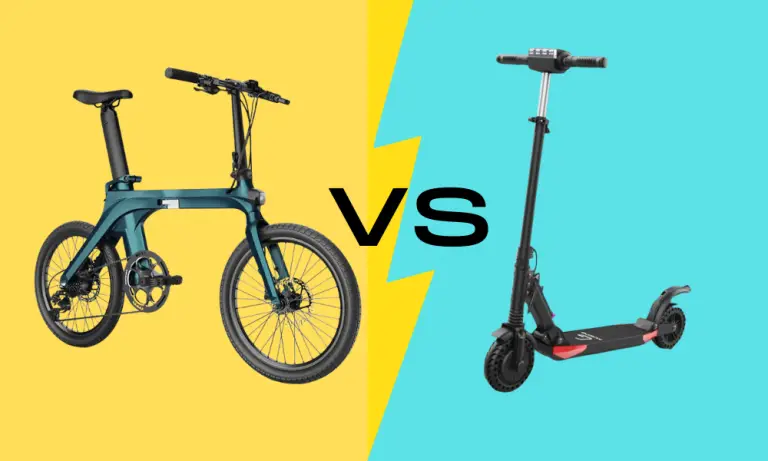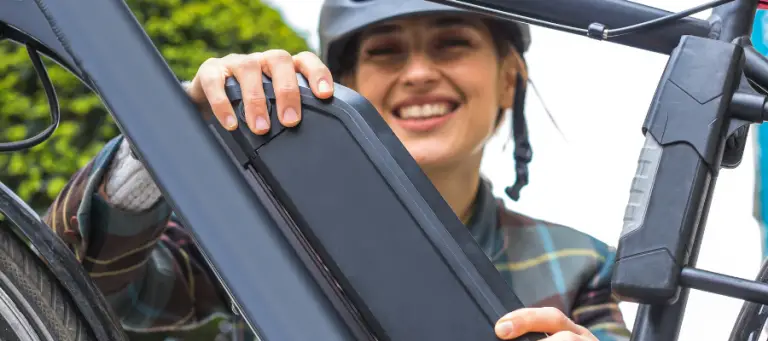When you purchase through links on our website, we may earn a commission. Affiliate disclosure.
If you’re considering broadening your cycling horizons or seeking a sustainable alternative to public transport, an electric bike offers a blend of manual and assisted cycling. With an integrated motor and battery, an e-bike provides adjustable support tailored to your speed, fitness, and terrain preferences. As the e-bike landscape evolves, choosing the perfect model can be daunting. To guide you through, we’ve compiled essential e-bike facts and addressed 20 key electric bike FAQs.
Top 20 frequently asked e-bike questions
How do electric bikes work?
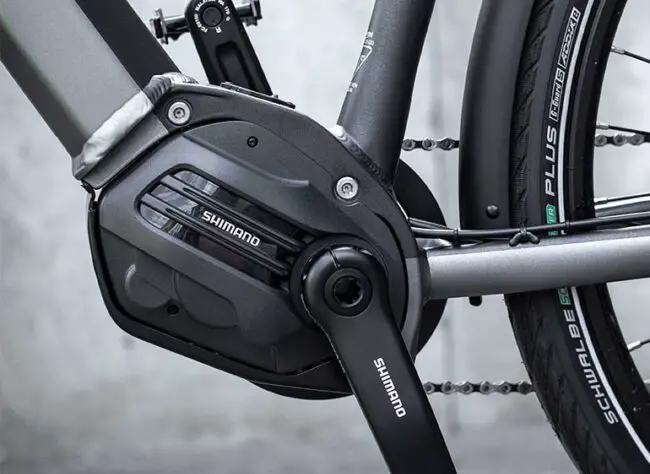
At their core, electric bikes are traditional bicycles with an added twist: a motor powered by a rechargeable battery. This motor assists the rider, making pedalling easier, especially on challenging terrains like uphill climbs. The level of assistance can often be adjusted, allowing riders to choose how much help they receive from the motor.
The motor’s operation is typically linked to the bike’s pedalling action. When the rider pedals, sensors detect the movement and activate the motor, providing a boost. This system ensures the motor doesn’t run continuously, conserving battery life. Some e-bikes also come with a throttle, allowing riders to use the motor without pedalling, much like a scooter.
The battery is a crucial component of an e-bike. It’s typically located on the bike frame or integrated into the design, ensuring it doesn’t interfere with the bike’s balance. Charging the battery is simple and can be done using standard electrical outlets. The duration of a full charge and the range it provides varies between models.
For those familiar with traditional cycling, transitioning to an e-bike is typically smooth, with the added motor assistance being the primary difference.
Do you need a license to ride an e-bike?
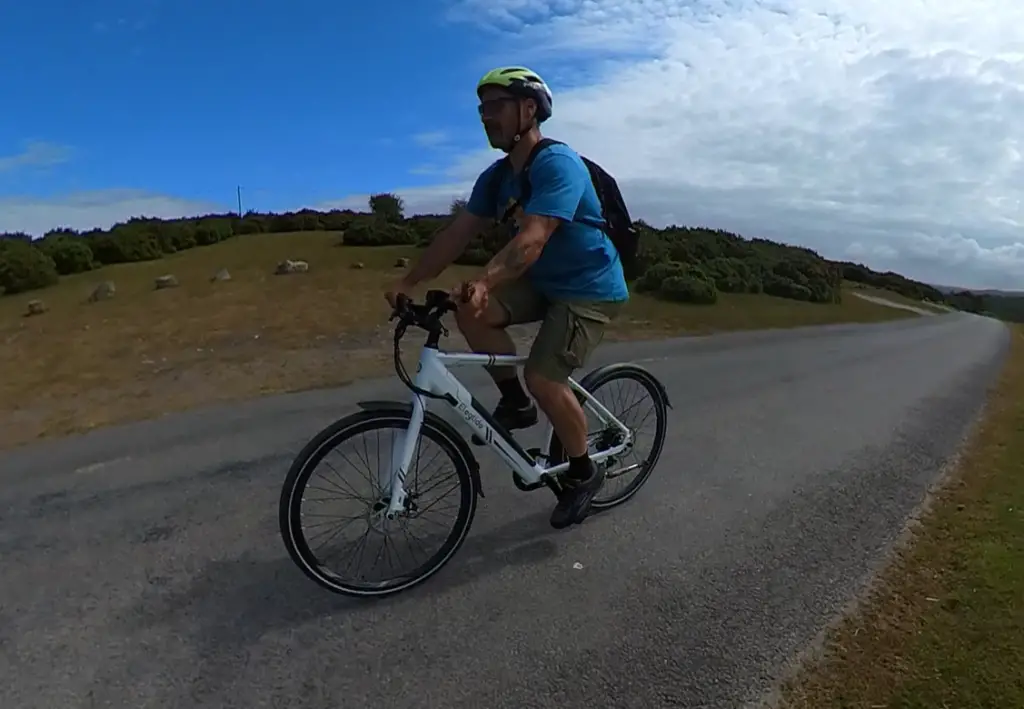
In the UK, electric bikes that adhere to specific criteria are treated similarly to traditional bicycles in terms of licensing and regulation. You don’t need a special licence, insurance, or registration to ride an e-bike.
The Electrically Assisted Pedal Cycles (EAPC) regulations state that the motor shouldn’t exceed 250 watts, and the bike shouldn’t assist when travelling over 15.5 mph. E-bikes that meet these criteria are classified as EAPCs and are exempt from the more stringent regulations that apply to mopeds and motorbikes.
However, there are e-bikes on the market that exceed these specifications. These are typically termed ‘speed pedelecs’ and fall under different regulations. Riders of speed pedelecs in the UK must have the appropriate licence and insurance and need to wear a helmet.
What is the average range of an electric bike on a single charge?
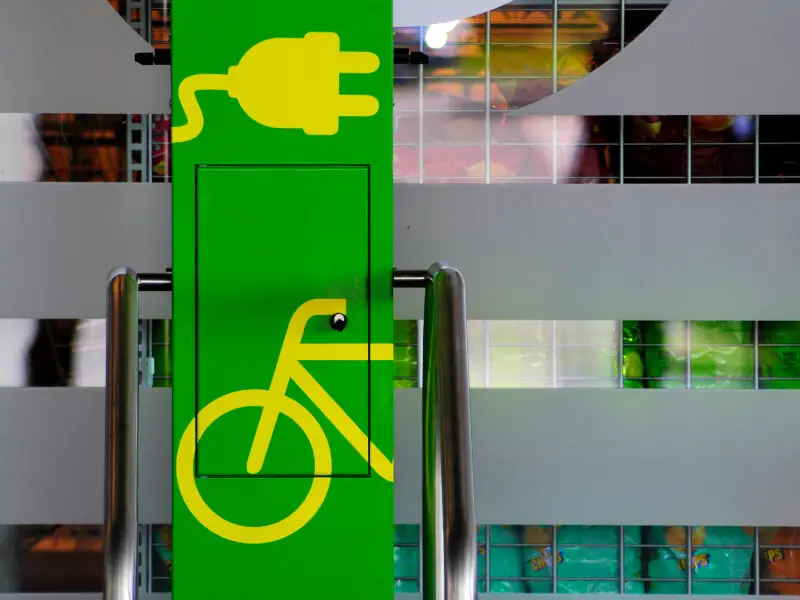
The range of an electric bike refers to the distance it can travel on a single battery charge. However, determining an e-bike’s average range isn’t straightforward, as various factors influence it. Typically, many e-bikes offer a range between 40-80 miles, but this can vary.
Battery capacity, measured in watt-hours (Wh), is the primary determinant of an e-bike’s range. A higher-capacity battery will generally provide a more extended range. However, the way the bike is ridden also plays a significant role. For instance, consistently using the highest level of motor assistance will drain the battery faster than using a lower level or occasionally turning off the assistance.
Riding conditions, such as hilly terrains or headwinds, can reduce the range as the motor works harder. Similarly, carrying heavy loads or the rider’s weight can influence battery consumption.
Find out how to improve the range of your e-bike
Can electric bikes be ridden in the rain?
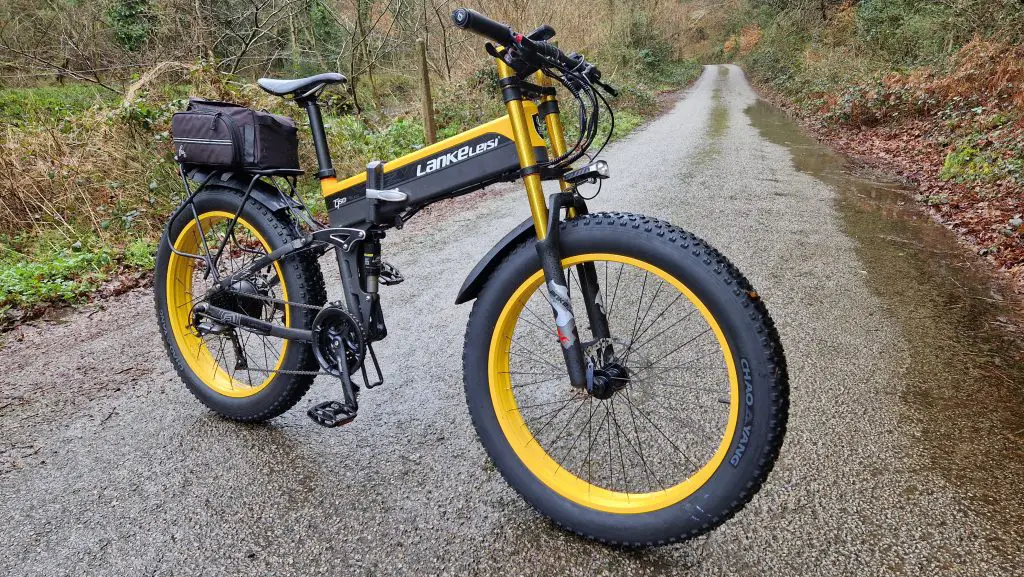
Electric bikes are designed for outdoor use, and manufacturers know riders will occasionally get caught in the rain. Because of this, most e-bikes are built to be water-resistant, which means they can handle light to moderate rain without any problems. The key components, such as the motor, battery, and display, are typically sealed to prevent water ingress.
However, while e-bikes can handle rain, avoiding riding in heavy downpours or submerging the bike in water is advisable. Drying off your e-bike after riding in the rain is also a good idea to prevent rust and prolong its lifespan.
Some additional precautions can be beneficial for those who frequently ride in rainy conditions. Fenders can prevent water from splashing onto the rider and the bike’s electrical components. Regularly checking and maintaining the seals around the battery and motor can ensure they remain waterproof.
Why are electric bikes so popular?

Firstly, e-bikes offer a unique blend of health and convenience. They allow riders to get a workout similar to traditional cycling but with the option of motor assistance when needed, making challenging terrains or longer commutes more accessible.
Lifestyle changes have played a significant role. In the West, we are more sedentary than ever in history. Electrically assisted cycling offers an enjoyable gateway to a healthier and happier life.
Economic factors are another consideration. With the rising fuel costs and the expenses associated with maintaining a car, e-bikes offer a cost-effective mode of transport. The initial investment in an e-bike is often recouped over time through savings on fuel, parking, and other transport-related costs.
E-bikes are more affordable than ever. Early models were ugly and very heavy. Modern e-bikes have a better range, increased motor efficiency, and other features, making them more practical for day-to-day use.
Can you get fit riding an electric bike?
Does the battery life of an e-bike get worse over time?
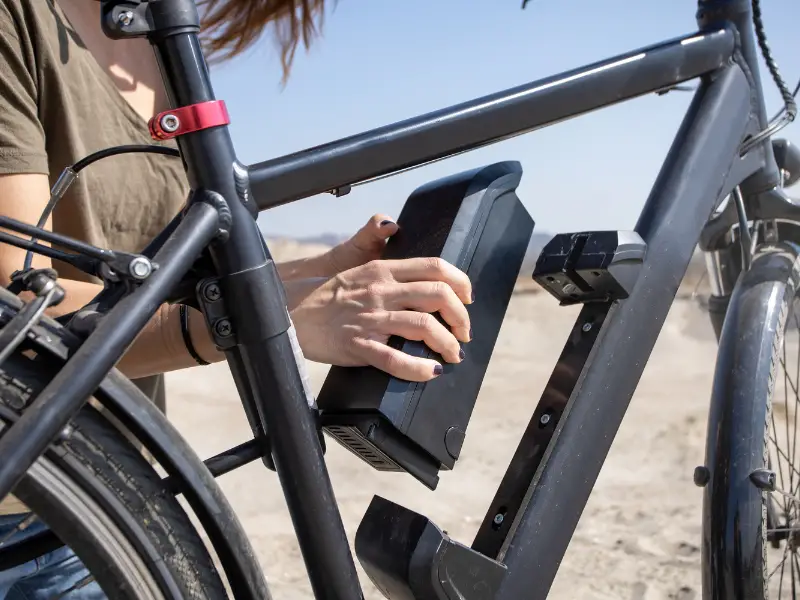
Like all rechargeable batteries, an e-bike’s battery has a finite lifespan, and its capacity will diminish over time. Each battery has a certain number of charge cycles – a complete drain and recharge – before its capacity starts to degrade. As the battery goes through more charge cycles, it will hold less charge, leading to a reduced range.
For instance, extreme hot and cold temperatures can adversely affect battery health. It’s advisable to store the battery in a cool, dry place and avoid leaving it in direct sunlight or freezing conditions.
Letting a battery remain discharged for extended periods can harm its longevity. However, it’s also essential not to overcharge the battery or leave it plugged in for too long after it’s fully charged.
Can I convert my regular bike into an electric bike?

The idea of converting a traditional bike into an electric one is appealing to many, and thankfully, it’s entirely feasible. E-bike conversion kits are available that provide all the necessary components, including a motor, battery, and controller, to electrify a regular bike.
When considering a conversion, the type of motor is a primary consideration. There are hub motors, which replace one of the bike’s wheels, and mid-drive motors installed around the bike’s bottom bracket. Each has advantages, with hub motors being simpler and often cheaper, while mid-drive motors offer better balance and efficiency.
The installation process varies based on the kit but is typically straightforward, especially for those with some mechanical know-how. However, some bikes with unique frames or components might not be suitable for conversion.
While converting a regular bike can be cost-effective and offers the flexibility of customisation, it’s essential to remember that a DIY e-bike might not have the same refined feel as a purpose-built electric bike. However, the joy of building and customising their e-bike makes the process worthwhile for many.
Read our electric bike conversion kit guide
Does frequent charging harm the e-bike’s battery?
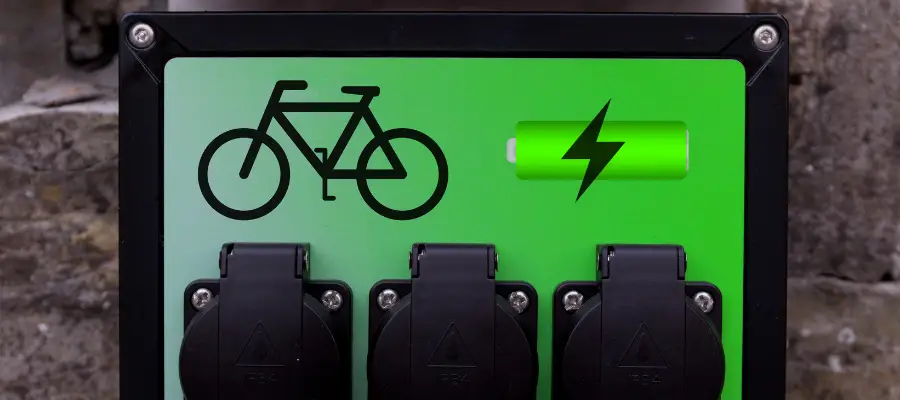
Taking care of your battery care is essential for the longevity of your e-bike, and charging habits play a significant role. Lithium-ion batteries, commonly used in e-bikes, have specific charging characteristics. Contrary to some beliefs, frequent charging doesn’t necessarily harm these batteries. They prefer partial discharge to complete discharge.
It’s a common misconception that batteries must be fully depleted before recharging. Doing so can strain the battery and reduce its overall lifespan. Instead, charging the battery when it’s partially depleted is advisable. For instance, charging after every ride, regardless of the battery level, can be beneficial.
While frequent charging is OK, overcharging can be detrimental. Modern e-bike chargers and batteries often have built-in mechanisms to prevent overcharging, but monitoring the charging process is still good practice.
What are the environmental benefits of using an e-bike?
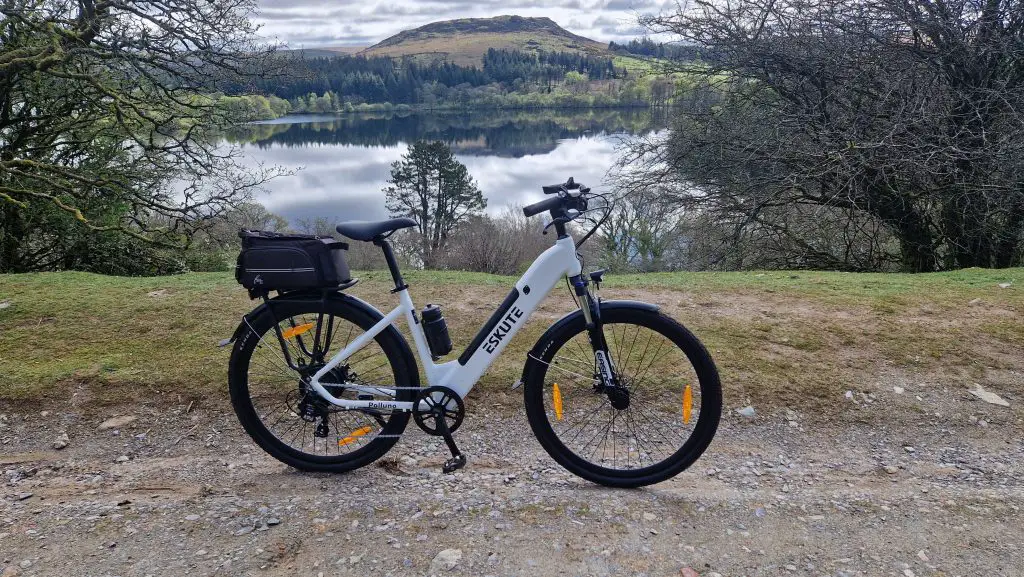
Electric bikes are generally considered a sustainable mode of transport (although there are some caveats). Firstly, e-bikes produce zero emissions. Unlike cars, especially those running on fossil fuels, e-bikes don’t release harmful pollutants into the atmosphere.
Another environmental advantage is the reduction in traffic congestion. As more people opt for an e-bike for their daily commute, there’s a potential decrease in the number of cars on the road. E-bikes also require less space than cars on the road and for parking.
There are some negatives, though the main one being the unethical way lithium and cobalt (used in the batteries) are mined. There are not only environmental concerns but also exploitation of child labour in some areas. For more information, look at the Atacama salt flats operation in Chile.
How can I increase the lifespan of my e-bike battery?
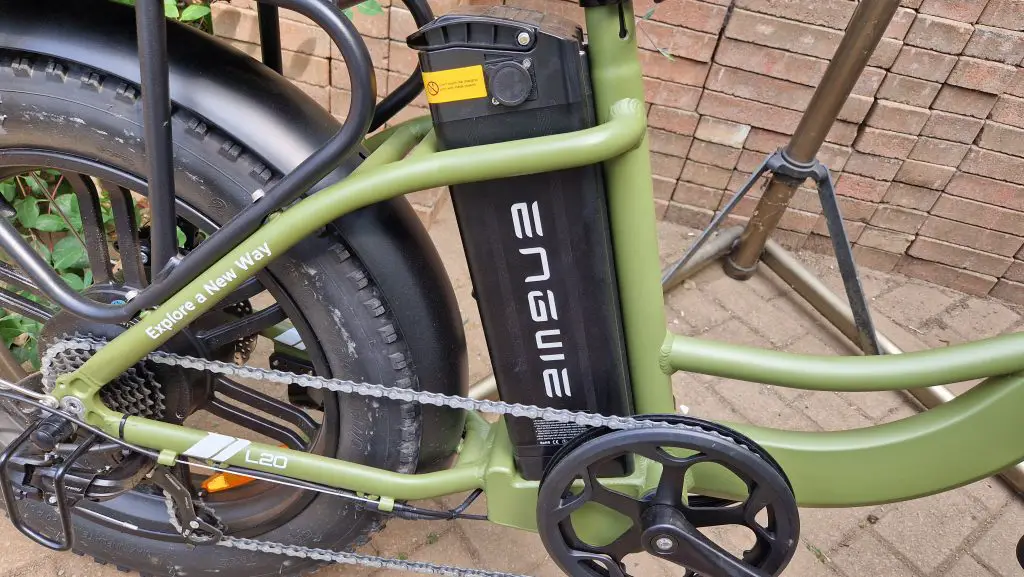
The battery is a core component of an electric bike; without one, it ceases to be an e-bike. Proper storage is paramount. Batteries should be stored in cool, dry places, away from direct sunlight or extreme cold.
While it might seem counterintuitive, letting a battery sit unused for extended periods can be detrimental. Regular use and charging keep the battery’s cells active, promoting longevity.
Instead of full discharges, partial discharges are preferable for most e-bike batteries. Instead of depleting the battery, charging it when partially drained can extend its life. Many battery experts recommend keeping lithium-ion batteries, commonly used in e-bikes, between 20% and 80% charged for optimal lifespan.
Lastly, physical care is crucial. Protecting the battery from physical shocks, ensuring its connectors are clean, and occasionally checking for any signs of damage can ensure the battery remains in top condition. Following these guidelines allows e-bike owners to maximise their battery’s lifespan and performance.
Does the UK government offer any incentives for buying electric bikes?
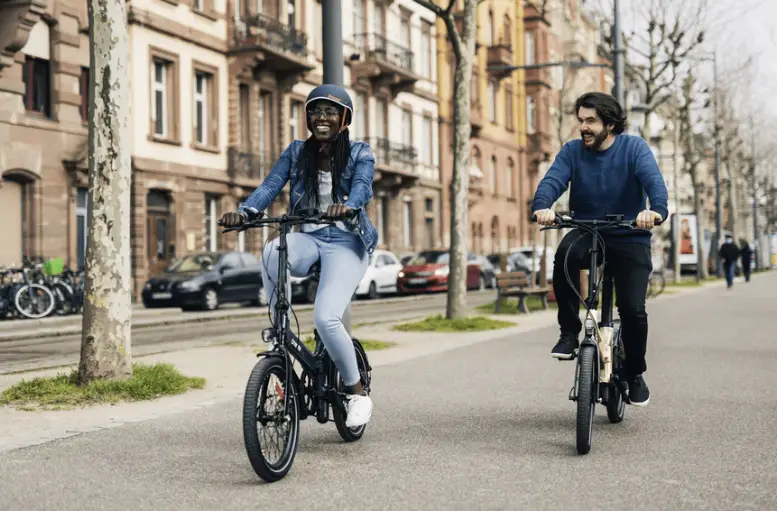
While there have been incentives for electric cars and other electric vehicles, direct financial incentives for e-bikes are limited.
However, the UK has implemented schemes like the Cycle to Work scheme, which, while not exclusive to e-bikes, can make purchasing one more affordable. The scheme allows employees to buy bikes and cycling equipment tax-free, leading to significant savings. Given the higher price point of e-bikes compared to traditional bikes, such schemes can make them more accessible to a broader audience.
Local councils and organisations might also offer incentives or grants to promote e-bike usage. These can range from discounts to trial periods or even free e-bike training sessions. Checking with local authorities or cycling organisations for any available incentives is always a good idea.
What are the legal requirements for riding an e-bike in the UK?
E-bikes that meet the Electrically Assisted Pedal Cycles (EAPC) criteria are treated similarly to traditional bicycles. This means riders don’t need a licence, insurance, or registration.
For an e-bike to be classified as an EAPC, it must adhere to specific criteria. The motor shouldn’t exceed 250 watts and shouldn’t assist when the bike’s speed is over 15.5 mph. Additionally, the bike should have pedals to propel it, and riders must be at least 14 years old.
E-bikes that don’t meet these criteria, such as ‘speed pedelecs’, fall under different regulations. As a result, they’re treated more like mopeds or motorbikes, requiring appropriate licensing, insurance, and often the use of helmets.
Riding an e-bike that doesn’t meet the EAPC criteria without the requirements can lead to legal complications. Ensure that your e-bike adheres to UK regulations to enjoy a hassle-free ride.
Does an e-bike’s performance vary in cold weather?
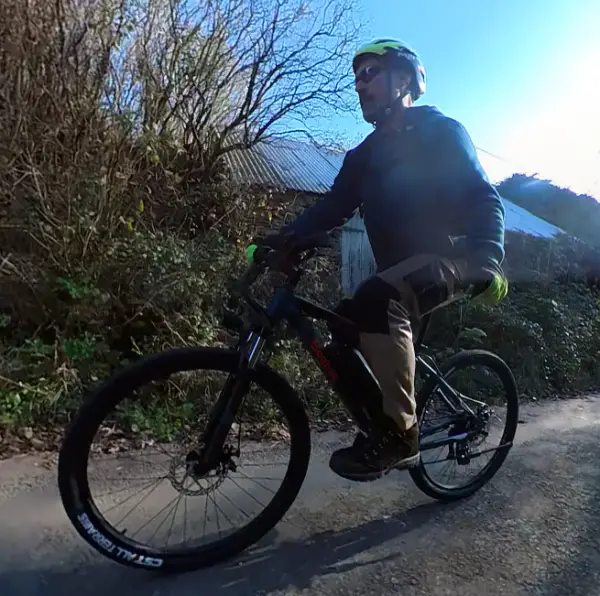
Cold weather can influence the performance of an e-bike, particularly its battery. Battery chemistry is very susceptible to extremes of temperature. As a result, the battery’s efficiency may decrease, reducing range. Some riders might notice that their e-bike doesn’t cover as many miles in winter as in warmer months.
Apart from the battery, the viscosity of the lubricants used in the bike’s mechanical parts can change in cold conditions. This can make the bike feel less responsive or slightly harder to pedal.
Riders can take a few precautionary measures to mitigate the effects of cold on the battery. Storing the e-bike and its battery indoors or in a warmer environment can help. If the battery is removable, taking it inside after a ride can keep it at a more optimal temperature. Additionally, charging the battery in a warm environment can enhance its longevity and performance.
Please read our 9 top tips on riding an e-bike in the winter
Can electric bikes be used for touring and bikepacking?
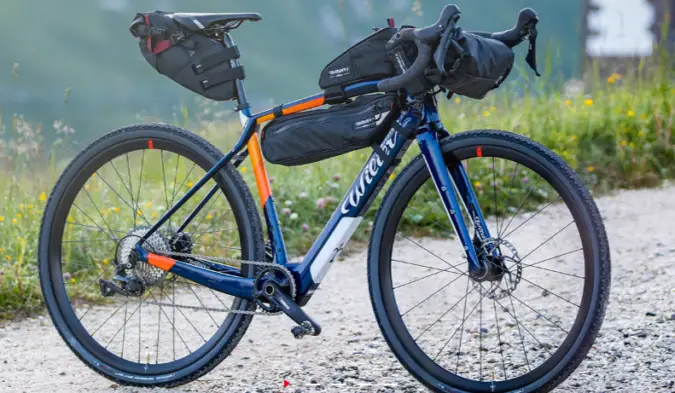
Electric assist allows riders to cover more ground with less fatigue, making those long journeys more manageable and enjoyable. The ability to tackle challenging terrains, such as steep inclines, becomes less daunting with the boost from an e-bike’s motor.
However, there are considerations for long-distance touring with an e-bike. Battery range is paramount. Riders need to plan their routes with charging points in mind. While many e-bikes offer a substantial range, covering hundreds of miles requires strategic breaks for recharging. Some tourers opt to carry a spare battery, effectively doubling their range.
The weight of an e-bike, typically heavier than a traditional bike due to the battery and motor, is another factor to consider. While the motor assistance compensates for the added weight during riding, manually handling the bike during stops or off-road can be challenging.
Lastly, maintenance and care on the road become even more crucial. Long-distance touring can put a strain on the bike, so regular checks, especially of the electrical components, are essential. Carrying a basic repair kit, including spare parts specific to e-bikes, can be a lifesaver on extended trips.
Check out the best electric bikes for bikepacking in 2023
Does the weight of the rider affect the range of an e-bike?
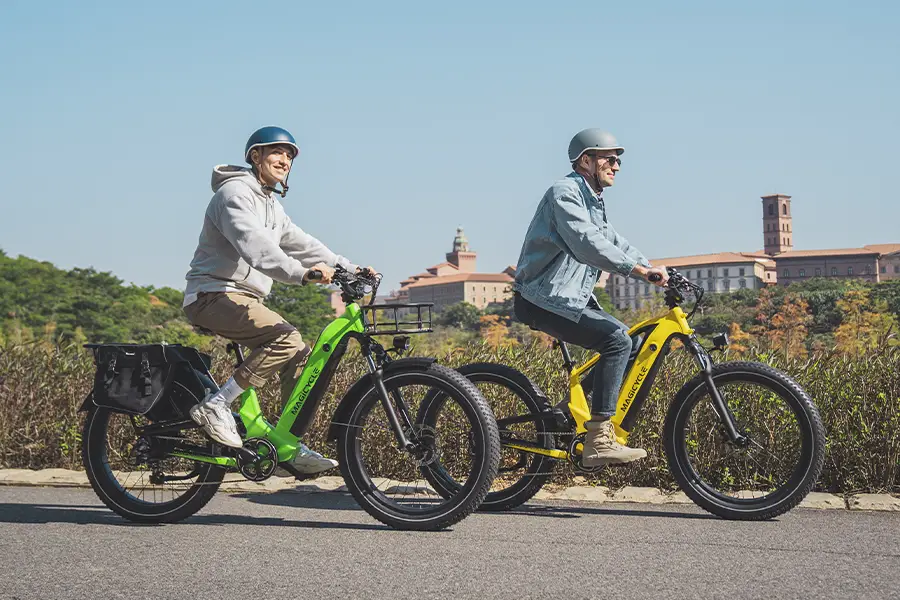
The weight that an e-bike has to carry, including both the rider and any cargo, can influence its range. A heavier load requires more power from the motor, especially during climbing hills or accelerating. As a result, the battery may deplete faster when carrying heavier riders or substantial cargo.
It’s not just about the total weight but also how it is distributed. An evenly balanced load, where cargo is well-distributed, can be more efficient than a lopsided weight distribution, which might affect the bike’s handling and efficiency.
Manufacturers often provide a maximum weight limit for their e-bikes, including the rider’s weight and any cargo.
What are the best electric bikes for heavier riders?
How do I know when my e-bike battery needs replacing?
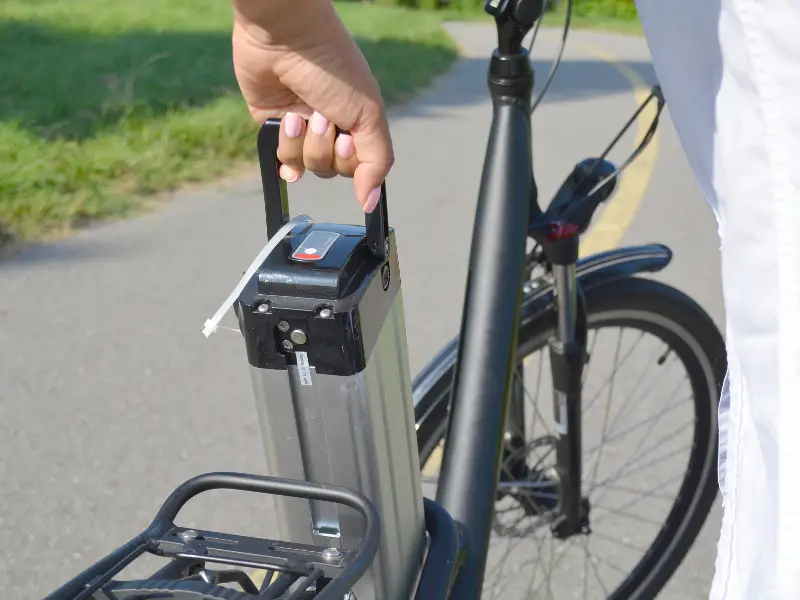
An e-bike battery, like all rechargeable batteries, has a limited lifespan. Over time, its capacity to hold a charge diminishes. One of the most apparent signs that a battery may need replacing is a noticeable reduction in the e-bike’s range. If the bike isn’t covering as much distance on a full charge as it used to, the battery’s capacity might be waning.
Another sign is that the battery takes longer to charge or depletes much faster than usual. If riders need to charge the battery more frequently, even with standard use, it might be nearing the end of its lifespan.
Modern e-bikes often come with display units that provide information about the battery’s health. These displays can show the current battery capacity or even give alerts when the battery’s health deteriorates beyond a certain point.
It’s worth noting that while the battery’s capacity might decrease, it doesn’t mean it will suddenly stop working. It will just provide a shorter range. However, for optimal performance and to ensure the safety and efficiency of the e-bike, it’s advisable to replace the battery once its capacity diminishes significantly.
Does an e-bike require any special maintenance?
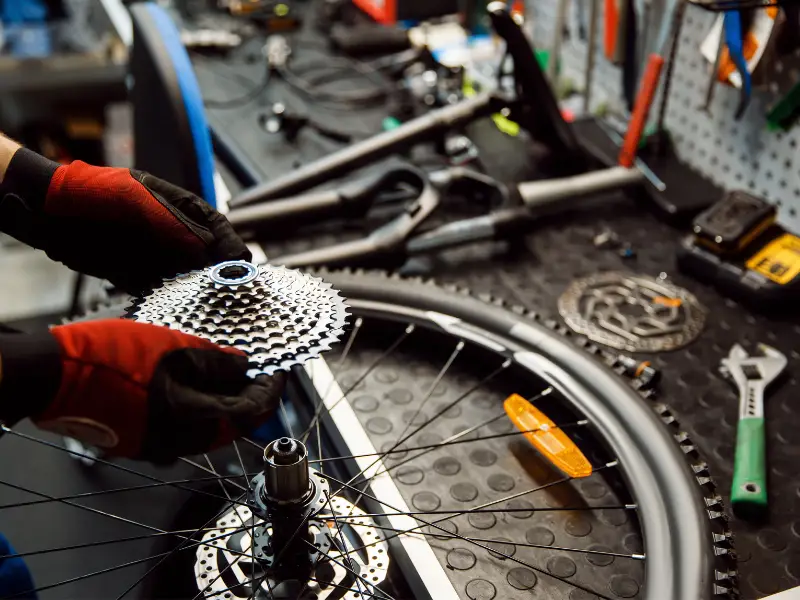
E-bikes are similar to regular bicycles but have added components like motors, batteries, and electronic controllers. These components bring additional maintenance considerations. However, at their core, e-bikes still have chains, gears, brakes, and tyres, all requiring regular checks and maintenance.
The electrical components, particularly the battery, require special attention. Regularly checking the battery’s connectors for dirt or corrosion can ensure efficient energy transfer. The motor, being a sealed unit in most e-bikes, typically requires minimal maintenance. However, keeping it clean and occasionally checking for any unusual noises or vibrations can help in the early detection of potential issues.
The electronic display and controls on e-bikes should be treated with care. While they are designed to be robust, avoiding harsh impacts and ensuring they remain dry and clean will prolong their lifespan. Firmware updates, if available, should be applied as they can improve the e-bike’s performance and fix any known issues.
Regular checks on the brakes, tyres, and gears are crucial in general maintenance. Keeping the chain lubricated, ensuring the brakes are responsive, and checking the tyre pressure can ensure a smooth and safe ride. It’s also advisable to have the e-bike serviced by professionals periodically, mainly if used frequently.
Can I take my e-bike on public transport?
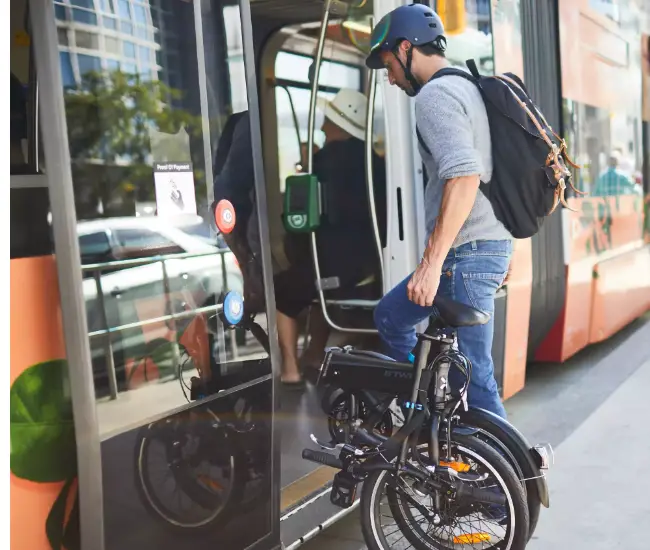
The ability to take an e-bike on public transport in the UK varies depending on the transport provider and the specific rules they have in place. Generally, compact or folding e-bikes have a better chance of being accepted on public transport due to their reduced size and the ease with which they can be stored.
Trains often have specific bicycle policies, and while traditional bikes might be allowed during off-peak times or with a reservation, e-bikes can sometimes be a grey area due to their added weight and the presence of a battery. However, if the battery is removable, some train operators might allow the e-bike onboard if the battery is carried separately.
Buses are more restrictive due to limited space. While some buses might accommodate folding e-bikes, accepting full-sized ones is less common. Trams and underground services have regulations, often leaning towards allowing compact or folding e-bikes.
It’s always advisable to check with the specific transport provider before travelling. Understanding their policies and any potential restrictions can prevent any last-minute surprises. Additionally, being courteous and ensuring the e-bike doesn’t obstruct pathways or inconvenience other passengers is crucial.
Does using the throttle on an e-bike consume more battery than pedal assist?
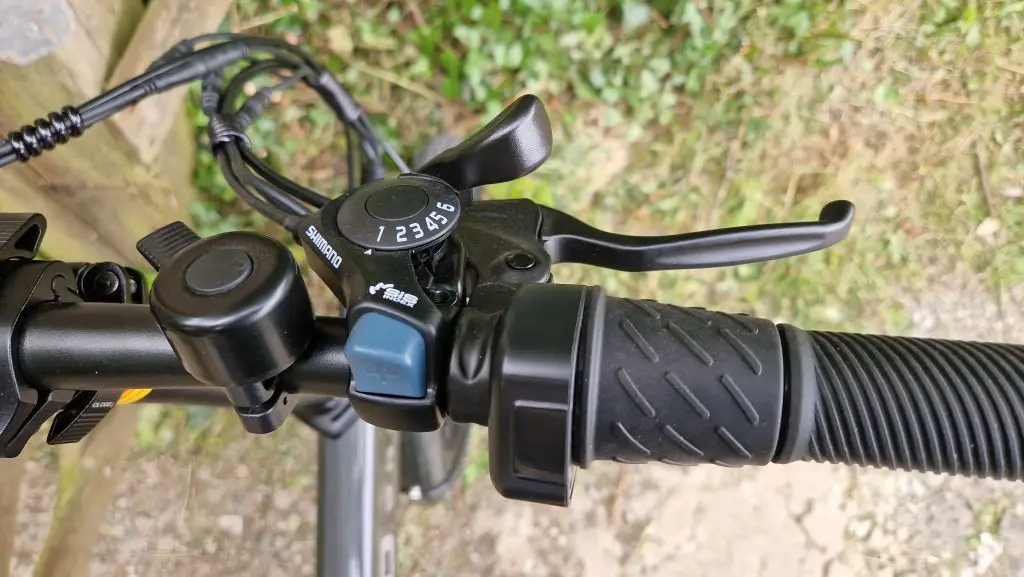
E-bikes can come with two primary modes of motor assistance: throttle and pedal assist. The throttle mode allows riders to propel the bike using just the motor, similar to how a scooter operates. In contrast, the pedal-assist provides motor assistance only when the rider is pedalling.
Using the throttle alone without pedalling can consume more battery power than pedal assist. This is because the motor is solely responsible for moving the bike in throttle mode, whereas, in pedal assist, the rider’s effort complements the motor’s assistance. The exact difference in battery consumption between the two modes can vary based on the e-bike’s design and the conditions in which it’s ridden.
It’s also worth noting that constantly relying on the throttle, especially in situations like uphill climbs, can put more strain on the motor and deplete the battery faster. By promoting a combination of human effort and motor assistance, a pedal assist often leads to more efficient battery usage and a more extended range.
Why is the speed limited on electric bikes?
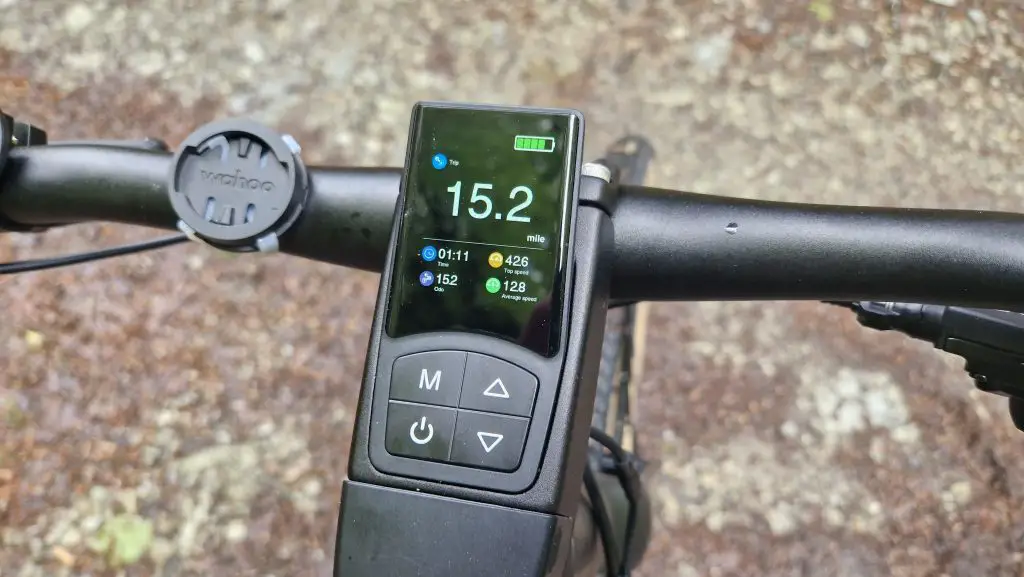
The speed limit imposed on e-bikes is primarily for safety reasons. E-bikes are designed to enhance your riding ability, not replace it, and ensuring they don’t reach excessive speeds helps prevent potential accidents. It also means that e-bikes can be safely used on shared cycle paths where you may encounter pedestrians.
The legal speed limit for motor assistance on e-bikes in the UK is 15.5 mph. Beyond this speed, the motor will not provide any further assistance, although riders can pedal faster if they wish.
The speed limit also plays a role in how e-bikes are classified legally. By adhering to the 15.5 mph limit and other criteria, e-bikes are categorised as bicycles rather than motor vehicles in the UK. This means riders don’t need a licence, insurance, or registration to use an e-bike.

